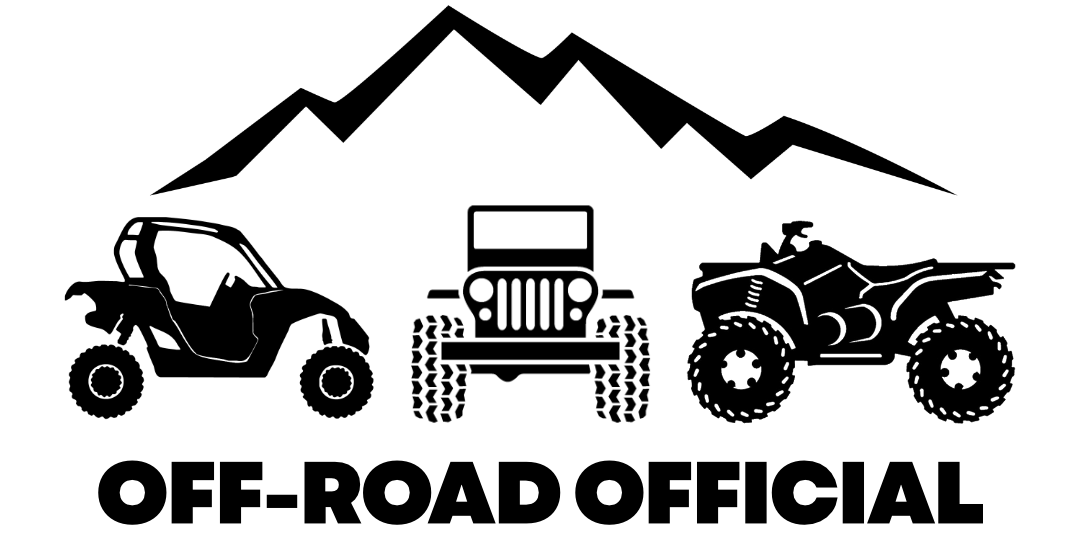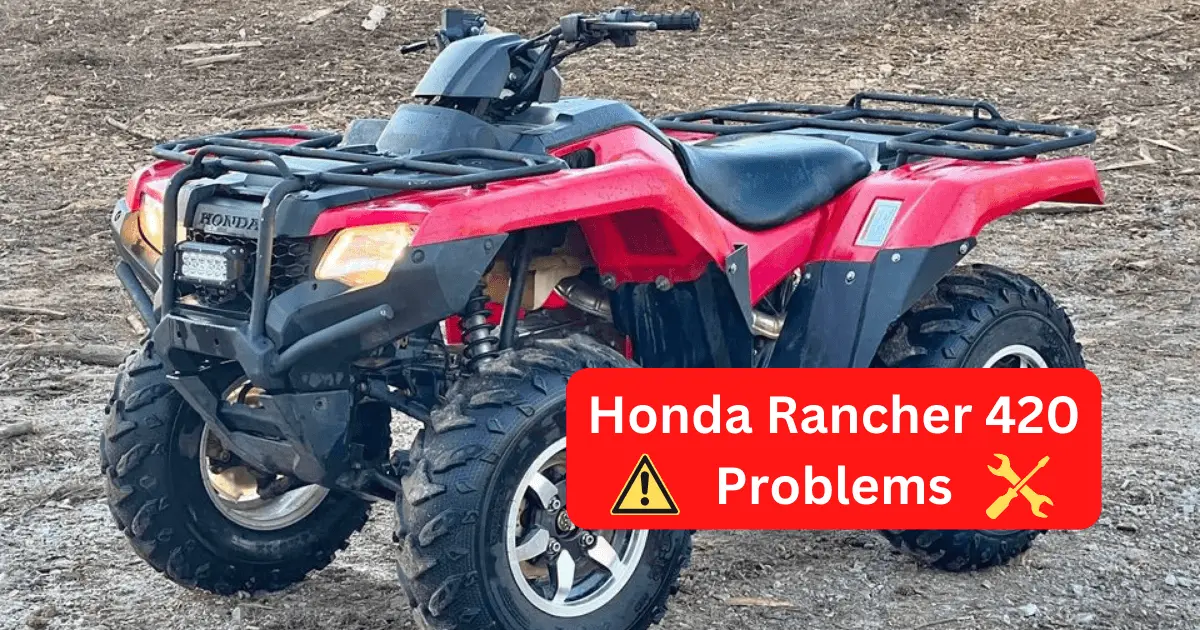The Honda Rancher 420 has been a staple in the ATV industry for years, even making for one of the best ATVs for the money.
As the model has undergone a number of slight transformations during its production run, it has always remained durable and dependable in the eyes of owners.
But despite its high standing among outdoor enthusiasts, this model is plagued by some common Honda Rancher 420 problems.
Honda Rancher 420 Common Problems
The Honda Rancher 420 common problems are as follows:
- Electric Shift Problems
- Fuel Injection Problems
- Fuel Pump Relay Problems
- Clogged Air Filter
- Valves Causing Compression Loss
- Overheating
This guide will detail each of these issues, along with likely causes and proven fixes.
Electric Shift Problems
Honda Rancher 420 electric shift problems are one of the most common issues experienced with this ATV. The Honda Foreman 500 ES also suffers from electric shift issues.
Owners of an electric shift model rather than a manual foot-shift model will often find that when attempting to shift up or down using the electric shifter, the shift will not work.
While the shift motor can be heard trying to make the shift when pressing the button, the actual shifting of gears does not follow.
This occurs more often in cold weather, and will usually be accompanied by the display flashing a bar or the gear it is stuck in.
This electric shift failure is usually the result of the factory grease that was installed on the shift motor gears hardening and gumming up over time.
Fixes
Removing and replacing this grease should fix this issue.
But making sure you cover your Rancher 420 with one of the best ATV covers while not in use will help prevent it from occurring in the first place.
To replace the grease, detach the shift motor and gears from the lower front of the engine by removing the four 10 mm bolts that hold it in place.
Then unplug the electrical connector, and it should come right off. Note that you do not need to disassemble the shift motor at this point.
Inspect the gears of the shift motor, being careful not to disturb the position they are in.
You’ll very likely find gummed up grease, which will need to be removed using a solvent such as paint thinner.
Once removed, replace this grease with a good amount of White Lithium Grease. When done, reinstall the shift motor and gears back onto the engine.
Doing this should eliminate this electric shift problem, and also make the shifting of gears much smoother and faster when pushing the button.
This issue has been known to recur every so often, and can be alleviated by repeating the process.
You can read about more workarounds for this problem in this guide to fixing the Rancher 420 electric shift problem.
Fuel Injection Problems
Another common issue with this model are Honda 420 Rancher fuel injection problems.
Owners who find that their vehicles are experiencing rough idling, sputtering or stalling also find that many times the fuel injector is the culprit.
But the fuel injector doesn’t just go bad on its own, as it usually begins with the fuel filter.
If your fuel is not clean and has debris in it, it will slowly clog the fuel filter.
A clogged fuel filter can eventually lead to failure of the fuel pump, along with the fuel injector.
Fixes
That said, it’s important to inspect your fuel filter frequently to ensure it is not turning the color of dirt, which indicates clogging and can lead to failure of the fuel injector.
Using Ethanol-free fuel helps minimize this.
If your Rancher exhibits any of the classic signs of a faulty fuel injector, you should test it by locating it within your engine bay and pulling the injector out.
Then point it at a cloth of some sort and turn on the ignition to determine the spray pattern.
A properly functioning fuel injector will spray a fine mist, while a faulty injector will spray out a stream of fuel.
Fuel Pump Relay Problems
Honda Rancher 420 fuel pump relay problems are another recurring issue in this model. Like the fuel injector, a clogged fuel filter can also negatively affect the fuel pump.
A clogged fuel filter leads to a lack of fuel in the pump, which leads to a lack of lubrication and coolant to the pump’s drive motor, which eventually leads to a failure of that drive motor and the fuel pump.
But if experiencing the symptoms of a faulty fuel pump such as stalling, backfiring, or failure to start, it would be wise to inspect the fuel pump relay before pinning this on the fuel pump itself.
Fixes
Inspect the fuel pump relay for any corrosion or other deterioration. If it appears in bad shape, that may be your issue and you can order a replacement online for cheap.
You can also ensure the fuel pump relay is working by listening to ensure it clicks when turning on the ignition.
You should first hear the fuel pump hum, followed by a buzzing from the idle air control valve in the throttle body, and then finally a noticeable “click” from the fuel pump relay when everything is working normally.
No clicking sound from the fuel pump relay is a sign that it may have gone bad and should be replaced.
Clogged Air Filter
Honda engines like those of the Honda 300ex, Honda 400ex, and Honda Rancher 420 live off of airflow, so the air filters are key in ensuring this air doesn’t come through the engine intake system along with dust and debris.
As such, the air filters in these machines tend to clog before too long.
Fixes
To ensure they continue to function properly, owners should be cleaning the air filter after every few hundred miles, especially if riding in dusty conditions.
Once cleaned, a best practice is to reinstall the air filter with some grease on the bottom to ensure a tight seal.
Valves Causing Compression Loss
Any hard starting or rough idling experienced with your Rancher 420 may be attributed to the intake valves.
Any amount of dirt or debris that gets sucked through the motor will affect the intake valves, which makes it incredibly important to clean the air filter every few hundred miles or less.
If not, the intake valves will start to wear over time. This wear will tighten them up to the point of compression loss, which can lead to the symptoms mentioned above.
Fixes
For this reason, it’s important to continuously check the valve clearance of both the intake and exhaust valves and ensure that both are adjusted to their proper clearances, which can be found in the owner’s manual.
It is also a best practice to replace these valves every year or two.
If you suspect your intake valves to be causing an issue, you can run a compression test or a leak-down test on them to help determine this.
Overheating
The engine overheating is another recurring problem in the Rancher 420. This is a common occurrence in both Honda ATVs and UTVs like the Pioneer 700.
This overheating generally occurs for a few different reasons.
- Clogged Radiator
- Fan Switch
- Air Blockage in Coolant System
- Blown Head Gasket
Causes & Fixes
Clogged Radiator
The radiator tends to cake up with dried sand, mud, and dirt over time, which will lead to overheating.
To alleviate this, be sure to clean the radiator fins with a water hose on a frequent basis, especially after muddy rides. Note that it is important not to use a pressure washer to do this.
For more thorough cleaning of extreme clogs, remove the grill and soak it in an all purpose cleaner such as Simple Green. Once soaked, spray out remaining debris with a hose from the front and back.
Temperature Sensor
The Rancher 420 is factory-set for the fan switch not to trigger until the engine reaches a certain temperature.
The problem is that in warmer climates or at higher elevations, the temperature sensor may not trigger the fan in time for it to keep the engine from overheating.
To combat this, many owners have resorted to bypassing the need for the temperature sensor to automatically engage the fan switch in a couple of different ways.
Some have installed a toggle switch, which runs between the wires of the temperature sensor and essentially bypasses it, enabling them to turn on the fan as they please with a flip of this toggle switch.
Others have taken this to another level, rigging their machines so that the fan automatically engages and runs constantly when the engine is on.
Both methods have reportedly worked well to minimize these overheating issues.
Airlock In Coolant System
An air bubble forming in the coolant system is another of the main causes of the Rancher 420 overheating.
Why would an air bubble form?
If the cooling fan is not triggering correctly, many times the engine will overheat and allow air into the system.
The air will usually find its way to the water pump, and the water pump can’t pump air.
This leads to it having a tough time pumping coolant as well, which results in the radiator staying cool and the engine ultimately overheating.
Once an air blockage is in the system, the engine will not stop overheating until that air is burped out.
To burp the air from the system of your ATV, follow the steps below.
- Raise the front end of your Rancher about a foot higher than the back end using a lift or parking it on a hill
- Ensure your engine is cool
- Remove radiator cap
- Fill it until coolant barely overflows from the radiator
- You’ll need to repeat steps above for the overflow reservoir as well
- Start your engine and let it idle – you’ll most likely see bubbles
- Once the bubbles stop, shut off the engine and replenish coolant if necessary
- Repeat this process until you no longer see bubbles
- Reinstall your radiator cap and reservoir cap (if applicable)
Your coolant system should now be free of any air bubble blockage. However, if you have excessive bubbling out of the radiator fill cap area that won’t subside, there’s a good chance you have a blown head gasket.
Blown Head Gasket
Any overheating the engine experiences puts your head gaskets at risk of blowing. And a blown head gasket will lead to recurring overheating.
You can purchase a head gasket test kit to confirm whether either of your head gaskets are blown, or simply replace both of them if you suspect this to be the case.
Conclusion
In summary, the Honda Rancher 420 common problems are electric shift problems, fuel injection problems, fuel pump relay problems, a clogged air filter, the valves causing compression loss, and overheating.
While many of these issues can be avoided by ensuring a proper maintenance schedule and ongoing preventative care for the ATV, others are completely out of the owners’ control and may need to be overcome by some slight mechanical repairs or modifications.


